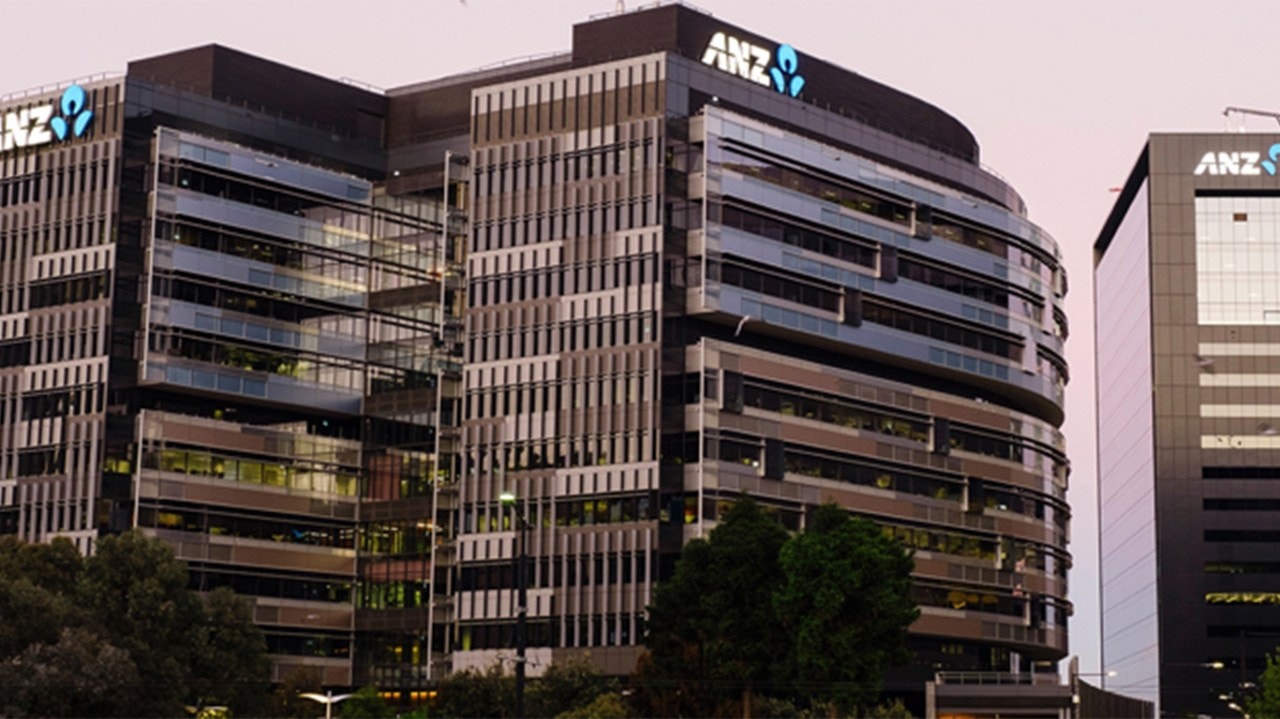At Australia and New Zealand Banking Group Limited (ANZ), the job of overseeing the mainframe infrastructure belongs to David Squires, Mainframe Hardware Engineer – Enterprise Compute who says, “I love the mainframe, love what it’s all about.”
For more than 22 years, Squires has worked in various roles supporting ANZ’s mainframe server and storage environment, which runs many of the bank’s core banking, messaging, development, test and other mission-critical systems.
His current responsibilities include capacity planning, hardware configuration and lifecycle management. He also helps optimize IT services to meet business and customer needs, including leading efforts to ensure mainframe recoverability and resilience.
More than 8.5 million retail and business customers depend on ANZ for banking services and it is important, for both the bank and customers, to minimize server downtime.
The bank’s approach to high availability and disaster recovery (DR) incorporates a range of potential outage scenarios. These include unexpected outages caused by natural catastrophes, cyberattacks and expected outages, such as when servers are taken offline for upgrades, configuration changes or DR exercises. “Our IT strategy is that we’ve got to be able to deal with all of them,” Squires says.
ANZ must also ensure it has a resilient, agile infrastructure that can quickly adapt to and support changing customer expectations, including anytime, anywhere banking. Furthermore, it must comply with industry regulations and guidelines for business continuity.
Streamlined site swaps
Replaces quarterly DR exercises with streamlined site swaps every 6 months
Faster recovery times
Enables flexible inter-site and intra-site capacity during outages, helping ensure faster recovery times
For many years, the bank maintained two infrastructure sites. The primary site had two IBM® zSystems servers to run production workloads. A secondary DR site, located more than 100 km away, had a separately configured IBM zSystem server. In the event of a disaster at the primary site, the DR site would go live and use capacity backup (CBU) engines to replace lost capacity.
Although ANZ met all existing industry requirements for business continuity, the primary/DR design and associated processes came with testing limitations. For example, the bank could only run a test for up to 10 days at the DR site. Also, Squires and his team could only run isolated DR testing at the DR site four times a year. They wanted to take it to the next level, regularly move sites for extended periods and no longer use test scenarios.
Seeing opportunities for change and improvement, ANZ embarked on a transformation of its mainframe infrastructure environment starting with its z13® upgrade in 2015. The regulatory landscape was growing increasingly stringent, with increased requirements expected on availability requirements.
“We wanted to make sure that as a bank we were well placed to exceed requirements into the future,” Squires says. “It was an opportunity to streamline, simplify and add resilience to our recovery processes and add much more functionality and options to the whole process at the same time.”
As part of the transformation, the ANZ Enterprise Compute team sought to take advantage of the newest IBM System Storage DS8000® series and other innovative IBM technologies. It learned about some of these advancements through participation in the IBM Systems Early Program, which gives the bank access to beta version IBM offerings and IBM developers who can assist with implementation.
Squires and the team redesigned the recovery systems and processes so that the bank no longer maintains primary and DR sites. Instead, it has one primary site and one alternate site, each with two IBM zSystems servers. All four server systems, including central storage, network connections, FICON and encryption cards, are identically configured. In the event of a disaster, any of the four servers can run the bank’s core systems, helping ensure inter-site and intra-site recovery without impact to the business.
“We are driving what in my opinion are industry-leading processes by having everything mirrored,” Squires says.
Other IBM technologies were added in 2016 to enable the transformation. These included the IBM zSystems disk channel subsystem function, which significantly simplifies storage configuration by allowing for a single address range across both sites. In addition, the HyperSwap® (PDF) function, part of the IBM z/OS® operating system, accelerates multi-target storage swaps without requiring outages, enabling storage to be mirrored across and within sites. Furthermore in 2018, ANZ requested additional streamline features for IBM Copy Services Manager technology on DS8000 systems which orchestrates data replication and failover and failback mechanisms between the different sites.
In 2020, ANZ was consulted in the early design phase for one of the most recently developed IBM technologies, the IBM Flexible Capacity for Cyber Resiliency solution. This is a new IBM z16™ offering that will further enhance ANZ mainframe environment processing capacity flexibility between primary and alternate data centers. It is designed to provide increased flexibility and control for organizations that want to shift product capacity between different sites for up to one year. It also features automation based on IBM Geographically Dispersed Parallel Sysplex® (GDPS®) technology.
ANZ is now better prepared to respond to expected and unexpected outages, which will help reduce business risk. In the event of an outage at the primary site, the bank can quickly transfer mission-critical functions’ server and storage capacity within and across sites, a capability that is designed for minimal or no loss of operational continuity. ANZ can choose whichever option works best based on specific threats or situations and can also maintain continuity until primary site functions are restored.
The integration of these capabilities is providing a significant degree of operational resilience and continuity confidence for bank executives. “With all this IBM technology, and our system design, we have multiple recovery options available to us,” Squires says.
Over the past few years ANZ has become a more flexible and efficient organization thanks to its newly simplified mainframe environment and automated processes. For example, the bank no longer needs to run exercises on a standby DR site four times a year. Rather, site swaps are business as usual (BAU) activities, performed approximately every six months and requiring fewer resources. In addition, system recovery times are shortened.
“The transformation gives us a much more flexible, dynamic environment, which means we can move systems around. We have better utilization of capacity. Our redundancy is better. And we can swap sites remotely,” Squires says.
ANZ now manages infrastructure lifecycle management as BAU tasks, migrating to its IBM z15™ servers utilizing its flexible environment. The z15 has provided advanced data privacy, security and extended cyber resiliency capabilities. With increased flexibility to rapidly swap capacity between sites, the bank will be able to deploy new servers faster, without requiring downtime.
Despite the COVID-19 pandemic, the migration has stayed on schedule. “Thanks to our mainframe design we are able to work remotely in a much more successful way. We haven’t had any issues with our site swaps, and we haven’t had any issues with system upgrades,” Squires says. At the outset of the pandemic, ANZ was able to quickly respond to increased customer demand for remote services because the bank’s upgraded infrastructure was already in place.
The ANZ Enterprise Compute team plans to continue collaborating with IBM to streamline processes and enhance the bank’s IBM Z® platform. “I’m looking forward to it, learning about what’s on the horizon and working with IBM to install new technologies,” Squires says.
ANZ sees lasting value in how it has transformed its mainframe environment, especially in terms of agility. “We no longer have one option—we have multiple options with the capacity to follow where we move our systems,” Squires says. “This means we can deploy much faster, which is our cost savings to the bank. As a team, we’re very proud of the transformation we’ve gone through.”
With a history dating back 186 years, ANZ (link resides outside of ibm.com) is a multinational banking and financial services company headquartered in Melbourne. The company is among the top four banks in Australia, the largest banking group in New Zealand and the Pacific region, and among the top 50 banks in the world. ANZ employs nearly 46,000 people who carry out the company’s mission to share a world where people and communities thrive.
Legal
© Copyright IBM Corporation 2022. IBM Corporation, New Orchard Road, Armonk, NY 10504
Produced in the United States of America, August 2022.
IBM, the IBM logo, ibm.com, DS8000, GDPSz13, HyperSwap, IBM Z, Parallel Sysplex, z15, z16, and z/OS are trademarks of International Business Machines Corp., registered in many jurisdictions worldwide. Other product and service names might be trademarks of IBM or other companies. A current list of IBM trademarks is available on the web at “Copyright and trademark information” at ibm.com/legal/copyright-trademark.
This document is current as of the initial date of publication and may be changed by IBM at any time. Not all offerings are available in every country in which IBM operates.
The performance data and client examples cited are presented for illustrative purposes only. Actual performance results may vary depending on specific configurations and operating conditions. THE INFORMATION IN THIS DOCUMENT IS PROVIDED “AS IS” WITHOUT ANY WARRANTY, EXPRESS OR IMPLIED, INCLUDING WITHOUT ANY WARRANTIES OF MERCHANTABILITY, FITNESS FOR A PARTICULAR PURPOSE AND ANY WARRANTY OR CONDITION OF NON-INFRINGEMENT. IBM products are warranted according to the terms and conditions of the agreements under which they are provided. IBM products are warranted according to the terms and conditions of the agreements under which they are provided. The client is responsible for ensuring compliance with laws and regulations applicable to it. IBM does not provide legal advice or represent or warrant that its services or products will ensure that the client is in compliance with any law or regulation.
The client is responsible for ensuring compliance with laws and regulations applicable to it. IBM does not provide legal advice or represent or warrant that its services or products will ensure that the client is in compliance with any law or regulation.
Statement of Good Security Practices: IT system security involves protecting systems and information through prevention, detection and response to improper access from within and outside your enterprise. Improper access can result in information being altered, destroyed, misappropriated or misused or can result in damage to or misuse of your systems, including for use in attacks on others. No IT system or product should be considered completely secure and no single product, service or security measure can be completely effective in preventing improper use or access. IBM systems, products and services are designed to be part of a lawful, comprehensive security approach, which will necessarily involve additional operational procedures, and may require other systems, products or services to be most effective. IBM DOES NOT WARRANT THAT ANY SYSTEMS, PRODUCTS OR SERVICES ARE IMMUNE FROM, OR WILL MAKE YOUR ENTERPRISE IMMUNE FROM, THE MALICIOUS OR ILLEGAL CONDUCT OF ANY PARTY.



